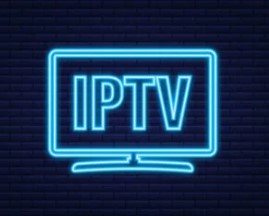In today’s digital entertainment landscape, watching IPTV has become a preferred method for accessing live television, on-demand content, and international channels without the need for conventional satellite or cable setups. IPTV, or Internet Protocol Television, delivers video content via internet infrastructure, enabling viewers to stream their favorite shows, movies, and sports in real time. However, like all streaming technologies, it is not immune to disruptions—buffering being the most notorious.
Buffering interrupts playback, causing delays, stuttering visuals, and an overall frustrating user experience. Fortunately, several strategies can help you optimize your setup and minimize buffering issues, leading to smoother viewing and more reliable access to content. This article explores seven smart tips for watching IPTV without buffering, equipping you with technical knowledge and practical solutions.
1. Upgrade to a High-Speed Internet Connection
The first and most vital factor in watching IPTV without buffering is the speed and stability of your internet connection. IPTV streaming demands consistent bandwidth, especially when viewing high-definition (HD), full HD, or ultra-high-definition (4K) content.
Key Recommendations:
-
Minimum Speed: For standard definition, aim for at least 10 Mbps. HD requires 20–25 Mbps, and 4K streaming ideally demands 50 Mbps or higher.
-
Wired vs. Wireless: Prefer wired Ethernet connections over Wi-Fi. Ethernet provides lower latency and fewer interruptions.
-
ISP Quality: Choose a reliable internet service provider with a reputation for low packet loss and minimal throttling during peak hours.
-
Bandwidth Management: Avoid heavy network usage while watching IPTV. Disable large downloads, cloud syncing, or file transfers on other devices.
Buffering commonly results when data packets aren’t delivered quickly enough. A strong internet connection gives IPTV systems the bandwidth they need to stream without delay.
2. Choose a Reputable IPTV Provider
Not all IPTV services are created equal. Some operate using outdated infrastructures, overloaded servers, or poorly maintained content delivery networks. Even with optimal internet speed, watching IPTV with a low-quality provider can still lead to buffering.
Criteria for Provider Selection:
-
Server Capacity: Ensure the provider offers multiple servers, ideally located in diverse geographic regions.
-
Stream Optimization: Look for adaptive bitrate streaming, which adjusts video quality in real-time based on connection strength.
-
Uptime Guarantee: Quality providers should offer 99.9% uptime and reliable customer support.
-
User Feedback: Browse forums, reviews, and feedback from current users to assess reliability, content access, and streaming performance.
A top-tier provider can dramatically influence your experience. Buffer-free streaming begins with a platform engineered for performance and scalability.
3. Use a Compatible and Well-Optimized IPTV Player
Just as important as your provider is the software application or device you use to access IPTV streams. Poorly coded or incompatible players can choke under the pressure of high-resolution video and complex channel playlists.
Features of an Effective IPTV Player:
-
Codec Support: H.264, H.265, and MPEG-2 compatibility ensures broad stream acceptance.
-
EPG Integration: Electronic Program Guide support improves channel navigation and user experience.
-
Buffer Control: Advanced players allow users to tweak buffer sizes and playback preferences.
-
Device Syncing: Ensure the player works seamlessly with your chosen device—Android boxes, smart TVs, iOS tablets, or Windows PCs.
Popular players such as IPTV Smarters Pro, TiviMate, Perfect Player, and VLC Media Player offer customization that boosts performance. When watching IPTV regularly, your player’s efficiency is as critical as your internet connection.
4. Optimize Your Streaming Device
Your IPTV performance hinges on more than just software—it also depends on the processing power and network configuration of your device. Whether you’re using a dedicated streaming box, a mobile phone, or a smart TV, each device has limitations.
Device Optimization Strategies:
-
Clear Cache: Periodically clear app cache and temporary files to reduce load times and prevent lag.
-
Close Background Apps: Disable any apps or services running in the background that might consume CPU or memory resources.
-
Update Firmware: Ensure your operating system and player software are regularly updated to patch bugs and enhance performance.
-
Disable Energy Saving Modes: These may throttle network or reduce device responsiveness during streaming.
Watching IPTV on a well-maintained device reduces the likelihood of crashes, delays, and graphical glitches. Consider upgrading older devices that struggle with modern streaming demands.
5. Adjust Stream Quality and Buffer Settings
Sometimes, buffering is inevitable due to variable internet conditions. In these scenarios, users can manually adjust stream settings to better accommodate their connection and avoid interruptions.
Effective Adjustments:
-
Resolution Tuning: Lowering resolution from 4K to 1080p or 720p can dramatically reduce required bandwidth.
-
Manual Bitrate Selection: Instead of relying on auto bitrate, manually choose a stream suitable for your current network condition.
-
Extended Buffer Size: Some players allow users to extend buffer length—this preloads more content, reducing the chance of playback gaps.
-
Turn Off Auto Resolution: On fluctuating networks, auto resolution changes can cause stream instability. Manual settings often perform better.
Balancing video quality with buffer resilience is key to watching IPTV under imperfect conditions. These tweaks ensure playback continues even during minor bandwidth dips.
6. Use a Premium VPN Service with Optimized Streaming Features
VPNs are increasingly popular among IPTV users. They offer privacy, geo-location flexibility, and the ability to bypass ISP throttling. However, not all VPNs are suitable for IPTV. A poorly configured or slow VPN can worsen buffering rather than alleviate it.
Smart VPN Usage:
-
Streaming Servers: Use VPNs with dedicated streaming servers that maintain high throughput and low latency.
-
Protocol Selection: WireGuard and OpenVPN UDP protocols offer faster performance than traditional tunneling protocols.
-
Location Matching: Choose a VPN server located near your IPTV server or content source for reduced latency.
-
Avoid Free VPNs: Free services often impose bandwidth limits or crowd users onto shared IP addresses, reducing reliability.
Watching IPTV with a premium VPN configured correctly can lead to smoother streams, especially when dealing with restrictive internet service providers or cross-border content access.
7. Schedule Viewing During Off-Peak Hours
Network congestion doesn’t only affect your household—it affects global server loads and ISP performance. Many buffering issues during IPTV viewing can be attributed to traffic spikes during peak times.
Timing Tips:
-
Avoid Peak Hours: Late afternoons and evenings (6–10 PM) are often peak streaming periods, especially for live events.
-
Record and Watch Later: If your IPTV provider supports DVR or catch-up services, consider watching recorded versions to avoid live buffering.
-
Choose Less Congested Channels: High-traffic channels may experience more buffering. Sometimes switching to alternate streams with similar content helps.
Being strategic about when you watch can yield major benefits in stream quality. Understanding the rhythm of internet traffic turns you into a savvy IPTV user.
Conclusion: Empower Your Streaming Experience
Buffering is the bane of digital streaming—and nothing ruins the excitement of watching IPTV faster than constant pauses and interruptions. But with the right knowledge, tools, and habits, this common nuisance becomes manageable. From securing fast and stable internet to selecting reputable providers and optimizing devices, each of these seven smart tips acts as a pillar for improved viewing performance.
Watching IPTV is more than just selecting a channel—it’s about ensuring your entire environment is configured for seamless playback. These strategies also help future-proof your setup against new content formats, service expansions, and technological advances. Whether you’re watching IPTV on a massive smart TV or your mobile device, staying informed gives you greater control over your experience.






